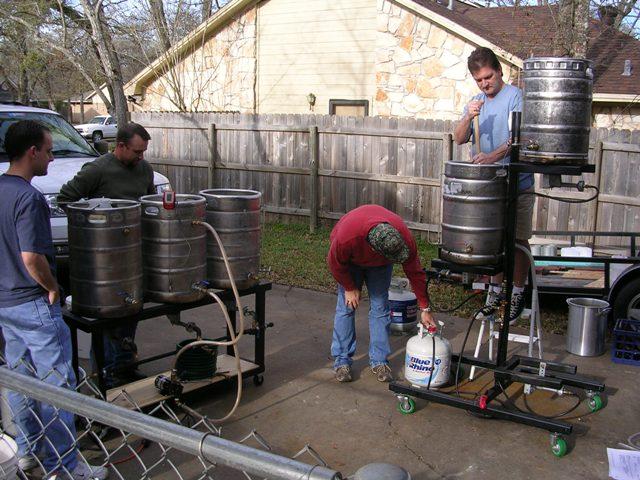Hello,
This is my first post here. I've been slowly acquiring the equipment to upgrade my system from 5 to 10 gal. batches. I don't want a 3 tier system due to back problems. I wanted to keep everything on one level and avoid lifting as much as possible. I recently used some gift money to buy a march pump to enable moving water and wort about. Well, this past weekend I gave the pump it's inaugural run with a 5 gal batch as a trial. The result was less than I had hoped. My garage floor was soaked with water and beer. I had endless problems getting the pump primed unless I unhooked one of the hoses at the pump which then spilled water or wort everywhere as I tried to hook them back up. The pump didn't fully drain the mash tun so I ended up having to hook up a line to the mash tun afterwards and let it drain into a pitcher and the pour it into the boil kettle. And cleaning the lines and pump afterwards was a chore as well. Now I'm thinking that I may have made a mistake in buying this pump. It definitely added more work and frustration to my brew day which was the exact opposite of what I intended.
I know there are a lot of folks out there who use pumps, would you mind sharing your tips with me. I'm very frustrated with it at the moment and thinking that I should just stick with gravity and 5 gal batches.
Thanks
mtbruer
This is my first post here. I've been slowly acquiring the equipment to upgrade my system from 5 to 10 gal. batches. I don't want a 3 tier system due to back problems. I wanted to keep everything on one level and avoid lifting as much as possible. I recently used some gift money to buy a march pump to enable moving water and wort about. Well, this past weekend I gave the pump it's inaugural run with a 5 gal batch as a trial. The result was less than I had hoped. My garage floor was soaked with water and beer. I had endless problems getting the pump primed unless I unhooked one of the hoses at the pump which then spilled water or wort everywhere as I tried to hook them back up. The pump didn't fully drain the mash tun so I ended up having to hook up a line to the mash tun afterwards and let it drain into a pitcher and the pour it into the boil kettle. And cleaning the lines and pump afterwards was a chore as well. Now I'm thinking that I may have made a mistake in buying this pump. It definitely added more work and frustration to my brew day which was the exact opposite of what I intended.
I know there are a lot of folks out there who use pumps, would you mind sharing your tips with me. I'm very frustrated with it at the moment and thinking that I should just stick with gravity and 5 gal batches.
Thanks
mtbruer










![Craft A Brew - Safale S-04 Dry Yeast - Fermentis - English Ale Dry Yeast - For English and American Ales and Hard Apple Ciders - Ingredients for Home Brewing - Beer Making Supplies - [1 Pack]](https://m.media-amazon.com/images/I/41fVGNh6JfL._SL500_.jpg)

















































